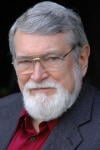
I was introduced to serious examination of the conflict between infinite economic growth and a finite Earth in 1973, when I returned to the Harvard Business School campus in Boston from advising the Central American Management Institute (INCAE) in Nicaragua. I joined an ongoing faculty discussion at the MIT System Dynamics Lab centered on the computer models used in the 1972 Limits to Growth—a dry and highly technical report to the Club of Rome that sold 30 million copies in 30 languages and sparked intense global debate. In 1973, I created and taught a doctoral seminar at the Harvard Business School exploring the implications of its findings for corporations and business management.
During my years in Africa, Latin America, and Asia, my perspective was predominantly local—centered on the dynamics of local communities and their relationships to their local forests, lands, and waters. The concern for living systems was always present, but the living Earth perspective languished until I began to realize the extent to which the devastation of living communities I was witnessing in Asia was in fact global and a product of the same corporate driven economic interests and policies.
After returning to the United States from Asia in 1992, I collaborated with several of my Asian colleagues on the two essays described in Returning to the United States that related our insights from the Asian development experience to the failures of a corporate led global economy that were becoming evident even then and pointed to the need for a very different global economy structured and managed to work serve human needs in mutually beneficial relationship with a living Earth’s community of life.
This quest has defined most of my subsequent work. To this end, in 1996, I participated in founding YES! Magazine, which I have since served as Board Chair, to tell the stories of people whose initiatives were creating the foundation of a new economic system that serves the needs of both people and nature.
I’ve long sensed that our human future depends on creating life-centered economies grounded in the principles of healthy living systems that serve life with the same dedication our present institutions devote to the service of money. I seemed obvious that the creation of such societies must be guided by principles derived from a deep understanding of how living systems have learned to organize as Earth life evolved over the course of billions of years.
Yet the work on living systems with which I was familiar seemed far too limited, mechanist, and removed from the richness of the living world as I experienced it to be helpful.

Our conversation on that flight was one of my life’s defining experiences. I have always since wondered at the unlikely probabilities involved in this seemingly chance encounter.
I was enthralled by her insights into the nature of living systems and the lessons they hold for human economies. I immediately recognized that her insights framed the system design principles around which a life-centered post-corporate economy must be organized.
By the time Ho and I arrived in London I knew I must set about immediately to write what became The Post Corporate World: Life After Capitalism. On the next leg of my journey home to New York I read several papers Dr. Ho left with me and worked out the book’s initial outline.
She noted in one of her papers that science is in the midst of a basic paradigm shift from the metaphor of the machine to the metaphor of the living organism. The difference Dr. Ho articulated between these contrasting metaphors jumped out as a key to sorting out the difference between the society we are and the society we have the potential to become. Once in New York I began immediately clearing my schedule for the next year and a half to devote myself fully to fleshing out the application of living system principles to the design of a living economy.
A
These books further expanded my understanding of the powerful ideas arising from biologists who study life on its own terms—a refreshing contrast to biologists who study life by grinding up living cells to study their chemical composition.
The insights into living systems that these two women articulated provided the underlying principles for the restructuring of our economic institutions and relationships on which much of my work has since drawn.
Were these two meetings purely chance? Or something more. I will always wonder.
The Post-Corporate World: Life After Capitalism, launched at the United Nations headquarters in New York City in March 1999 at a delegates’ lunch and press conference. A BusinesWeek reviewer proclaimed it
“Beyond ‘big think.’ In fact, The Post-Corporate World is positively cosmic…Korten’s book is valuable because it invites us to do something we rarely bother about: to reimagine ourselves.”
Business Week, March 29, 1999.
Presentations on the living economies framework that Elisabeth Sahtouris and I subsequently made at two Social Ventures Network conferences in 2001, provided the conceptual framework for the Business Alliance for Local Living Economies, which SVN launched shortly thereafter and has since been supporting local business networks across the United States and Canada dedicated to growing local living economies.
